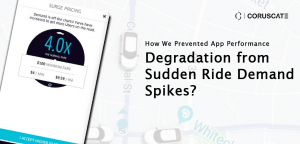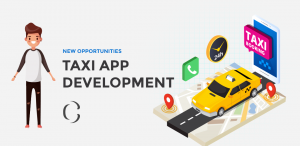Challenges in the ride-sharing sector in 2019 and how to win over them

Ride-sharing service is growing in fame and demand among passengers around the world and the market is expanding at an accelerated pace. Customers are delighted to pay for their own leisure and they are happier when they have to pay a lesser fee compared to that of the regular taxis. In order to attract your customers, you need to identify the factors that make them lose faith is important for a ride-sharing business. In the previous blogs, we have described various ride-hailing apps and their functioning and the scope of these apps.
There are numerous opportunities available in the taxi booking business but along with the scope come the challenges that every taxi booking business faces.
Let’s discuss in detail about the challenges that you might face when you enter this space and how can you overcome them.
Your business cannot get started without drivers:
Curious why are drivers so valuable in the taxi-booking and ride-hailing business? Well, the ride-sharing drivers are essentially autonomous contractors. They are not always blocked by a single company. So, they have more options to explore by registering for various ride-sharing apps and make more money. To keep the loyalty of the drivers is a critical part of a ride-sharing platform. And to do that you need to know the factors that drivers care about the most. Drivers basically care about income and flexibility.
For example, in different markets in countries like the US and Australia, people mostly have their own cars. With the rise of ride-hailing services, some people can now make some extra bucks by riding for ride-sharing companies like Uber or Lyft. If we consider the situation of Singapore, they have an efficient public transport system and the availability of a wide range of ride-sharing options. So, the people owning a car is more of a luxury than a necessity. Using the car for taxi booking services like Grab can be a good option for the utilization of the vehicle.
Now, as we can understand that the drivers are a critical part of the business, ride-sharing companies need to invest in efficient training programs for drivers to obtain the best customer service.
Grab ride-hailing service has started GrabAcademy with a driver welfare program called Better 365 to get better driver behavior. The academy has released many app upgrades which consist of trip rating and in-app training videos in order to ensure a safe and fulfilling driving experience.
Influence of government overlooking and engrossment:
There is no doubt that disruptive business models create both winners and losers. The regulating authorities also believe in the same thought process. There is a rapid shift to ride-sharing in the US and Asia. Even though Europe is lagging behind, it still has the influence of ride-sharing services.
It is also suspected that some countries may progress towards a combined regulation for both taxis and ride-sharing cabs.
The Land Transport Authority of Singapore (LTA) introduced new unified regulations to force powerful rules on private-hire operators in the year 2019, as there were no uniform regulations for private operators like Grab and GO-JEK previously. Singapore’s government had hit Grab and Uber with fines that amounted to S$13 million ($9.5 million) right after Uber’s exit from Southeast Asia.
Another major hurdle for ride-hailing businesses is securing permissions to run in different countries. Governments have several authorized rules and regulations that explicitly govern local transportation network companies. For example, GO-JEK endured denial from the Philippines’ government agencies. This happened because its ride-sharing service application did not match the requisite local ownership standards.
Cost battles is a never-ending struggle:
As there is a tough competition amongst the ride-hailing services, there are intense discount wars. The companies offer liberal incentives to both commuters and drivers for gaining market share. In China, the company Dianping has started its ride-hailing services in seven cities coupled with handsome rewards for passengers. They have challenged Didi Chuxing and other ride-sharing players in the country by offering these rewards. The company is providing three coupons of 13 yuan each, which is equal to the flag-down price of a regular taxi in China. Another ride-hailing company, Go-Jek is offering market entrance pricing right now in Singapore and its charges are much cheaper than Grab without the surge pricing.
Instead of focusing on Go-Jek’s strategy, Grab plans to totally avoid the price war with GO-JEK. They are much more focused on better customer experience with a long-term perspective.
Fabricating customer loyalty programs that adhere:
Do you think the passengers are really loyal to a single app? Have they tried any other ride-hailing apps or they are just using one? All the businesses in every market are curious to know if their customers are really enjoying switching the apps to avail the offers and promos or they favor sticking to one particular brand.
Well, an amazing UX/UI and smoothness of use appears to affect customer loyalty in the same way. Here is an example of HKTaxi app from Hong Kong. They have simplified the app design in order to make it user-friendly. The company has also started a new partnership with Mastercard to ensure secure in-app digital payments for its passengers. The service will prove profitable for cardholders and taxi drivers in Hong Kong. Frequent passengers can now experience the chance of handling cashless transactions while taxi drivers are safeguarded from likely threats like cash robbery or receiving counterfeit banknotes.
Cost of taxi-booking app development and how can Coruscate help you to overcome all the challenges and be successful in your business?
Well, as we always explain, the cost of a taxi-booking app is dependent on the hours needed to develop it and the features involved in the app. The app with basic features will need the time and will cost as it is given in the table:

We can help you to build your app with the latest technology and out of the box features that will make you stand out from the crowd and make your app more popular among your customers. You can read all of our blogs to know the stepwise process of getting into the ride-hailing business and surviving the odds in order to succeed.
After reading this blog, you are somewhat aware of the challenges that you might face while being in the taxi-booking business. If you have any further queries or you wish to develop a customized taxi-booking app for your business, feel free to contact us and ask for a free demo.








